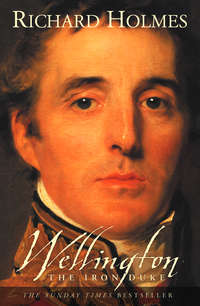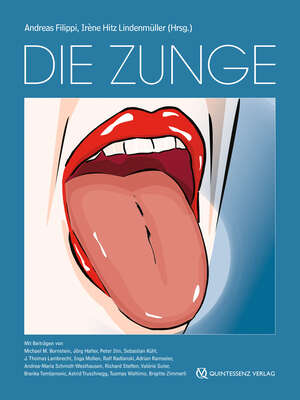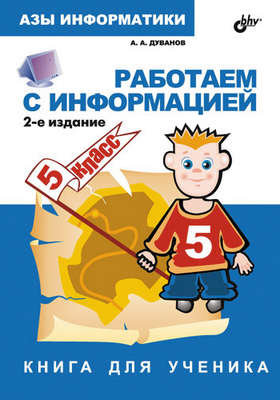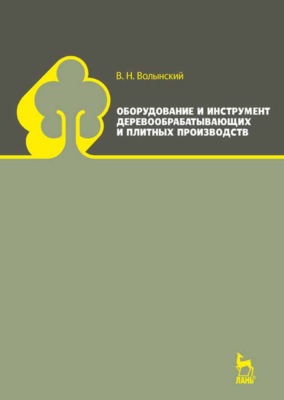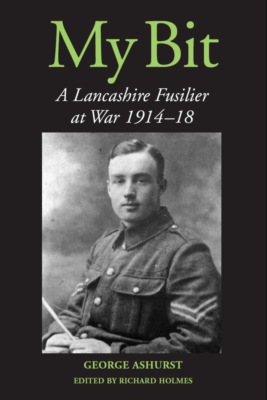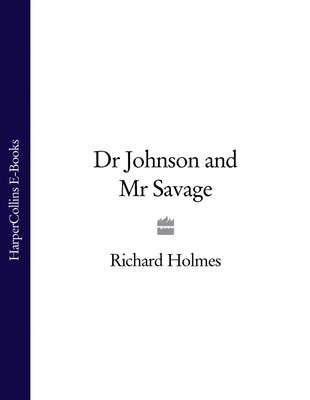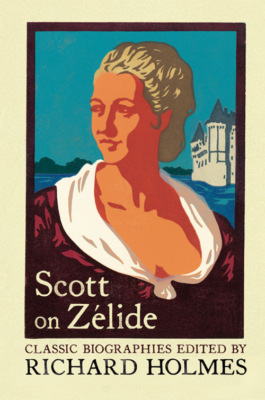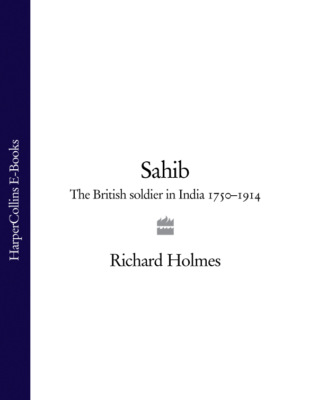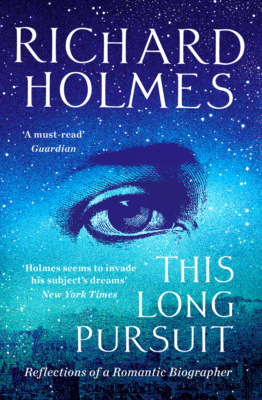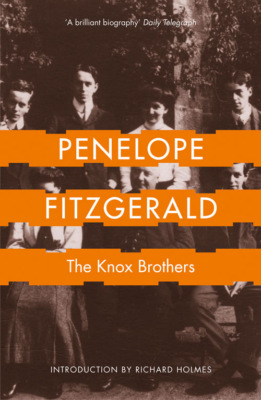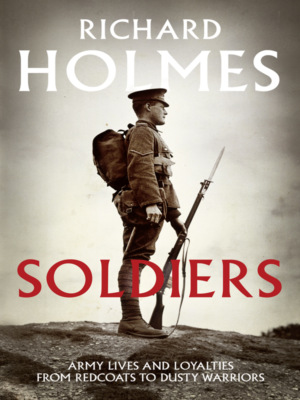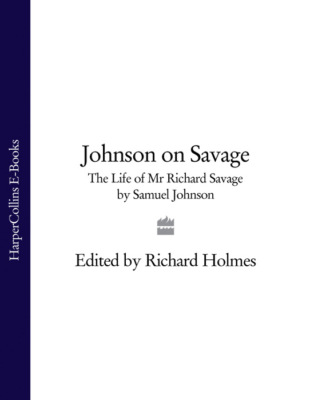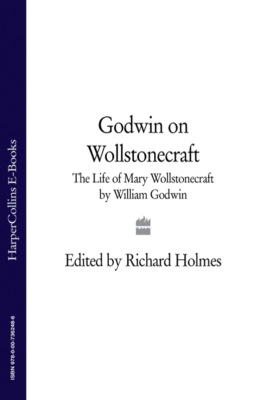Loe raamatut: «Wellington: The Iron Duke»

WELLINGTON
THE IRON DUKE

RICHARD HOLMES

CONTENTS
Cover
Title Page
Introduction
A Solitary Life
Sepoy General
False Starts
Peninsula
Two Restorations and a Battle
Pillar of the State
Envoi
References
Index
About the Author
Other Works
Copyright
About the Publisher
INTRODUCTION
I was the sort of boy who had heroes, and long before I ever dreamt of becoming a military historian, the Duke of Wellington was firmly enshrined in my personal pantheon. He seemed to have every virtue: he never lost a major battle, made war on soldiers not civilians, understood grubby logistics just as well as the rather more dashing tactics, and set the seal on his military career by defeating Napoleon, the towering genius of his age. And as someone often forcefully reminded of the couplet;
Duty, duty, must be done
The rule applies to everyone
I admired the duke’s iron sense of duty. ‘Nobody else will do it,’ he complained in his declining years. ‘The Duke of Wellington must.’1 He was a beau, but a restrained one. When my own idea of understated elegance consisted of clean jeans and a black cashmere roll-neck, I applauded the duke’s eschewing scarlet and gold braid in favour of a trim blue frock coat and the eponymous boots. He was brave, showing physical courage on a dozen battlefields, and moral courage throughout a long political career. Like many young men, I saw bravery as the ultimate virtue. There was also an attraction in his manly vices. What adolescent would not be impressed by a man described by one of Napoleon’s mistresses as a good deal more vigorous than the emperor himself?
Lastly, he was master of the crisp aphorism; something I often sought but rarely found. He told the politician and diarist John Wilson Croker that: ‘All the business of war, and indeed all the business of life, is to endeavour to find out what you don’t know by what you do; that’s what I called “guessing what was on the other side of the hill”.’2 When a gentleman mistook him for George Jones the painter (who did indeed resemble the duke), and accosted him in the street with ‘Mr Jones, I believe?’ he responded: ‘If you believe that, you’ll believe anything.’3 The young Queen Victoria was upset to discover that sparrows were ruining the exhibits in the Great Exhibition of 1851, but could not be shot because the great building was made of glass. ‘Try sparrow-hawks, Ma’am,’ suggested Wellington. And when a publisher demanded payment to avoid Wellington being mentioned in the memoirs of a former mistress, he riposted: ‘Publish and be damned.’4 Even though he sometimes reviled his men as ‘the scum of the earth’, his essential compassion burst out when he admitted after Waterloo that: ‘Nothing except a battle lost can be half so melancholy as a battle won.’
But as I grew older and looked harder at the evidence, there were an awful lot of cracks in the ducal portrait. Wellington was not invincible. He was roundly beaten in a scrambling night attack at Sultanpettah Tope outside the Mysore fortress of Seringapatam in 1799 – it left such a lasting impression on him that, forty years later, he could still draw a sketch-map of the action. Critics suggested that he might have been court-martialled had his brother not been governor-general of India at the time, and this was not the last occasion when his well-placed political connections proved useful. In 1812 he botched the siege of Burgos – ‘the worst scrape that ever I was in’ – and on the retreat he railed against ‘the habitual inattention of the Officers of the regiments to their duty’, leaving many of them with lasting resentment of his ingratitude.5 Indeed, Lieutenant William Grattan of the 88th Regiment (Connaught Rangers) complained that ‘the never-to-be forgotten service of that wonderful army’ was treated ‘in a scandalous manner’ by Wellington.6 Ensign John Mills of the Coldstream Guards thought that his dispatches were dishonest:
I have learnt one thing since I came to this country, and that is to know how easily England is duped; how completely ignorant she is of the truth of what is going on here … At Fuentes the French completely turned our right; Lord Wellington in his dispatch slightly notices it, and would lead you to think that the troops on the right were withdrawn rather than, as was the case, driven in; and then they give him what he himself never dreamt of claiming, a victory.7
Wellington’s reprimands were scathing and not always just. In 1811, Lieutenant Colonel Bevan of the 4th Regiment was so distressed by being unfairly blamed by the duke for the escape of the French garrison of Almeida that he shot himself. He was also something of a snob, preferring talent with a title to talent without. He often privately expressed contempt for his allies, and the German historian Peter Hofschröer has established at least a prima facie case against him for dealing dishonestly with the Prussians at Waterloo. A strong thread of harshness ran through his character: Paddy Griffith observed that he ‘could be a ferocious commander even by the standards of a ferocious profession in a ferocious age’. In 1813 he told a subordinate at the siege of Pamplona that ‘you may shoot the governor and his officers, and decimate the rank and file’, and he regretted not shooting the garrison of Ciudad Rodrigo when he stormed the place in 1812 (technically permissible within the laws of war as they then stood), because killing one garrison would have discouraged others.8 He was steadfastly opposed to the abolition of flogging in the army, and consistently argued against commissioning officers from the ranks. While his political career had its moments of triumph, he never fully grasped the realities of his age, and by setting his face firmly against parliamentary reform, he was condemned to defend a position that was ultimately untenable.
So, despite the tendency of some historians to place Wellington ‘on a pedestal so high that his human qualities and failings have been all but lost to view’, it is clear that the picture is infinitely more complex.9 I approached this book and the BBC television series it accompanies determined to rub away as much of the varnish as I could; to try to get as close to the real Wellington as he (and some of his biographers) would let me. I went back to sources I had not used for years – Lieutenant Colonel John Gurwood’s Dispatches of Field Marshal the Duke of Wellington, a volume with almost a thousand tightly-written pages, sits in beautifully bound splendour on my desk – and I visited as many Wellingtonian battlefields as I could. Some, like the overcrowded Waterloo and the wide-open Salamanca, I already knew. But there were others I did not, and amongst them I found Assaye, scene of Wellington’s victory over the Marathas in 1803, the most striking. Indeed, travelling by road in India at the tail of the monsoon told me just as much about the man as The Maratha War Papers of Arthur Wellesley. Conditions were so bad that our smart four-wheel drive vehicles were no use, and we took to a hastily borrowed tractor and trailer, all helping to push when it became stuck in the mud. If the climate on the Indian subcontinent struck few chords with Spain, parts of the terrain were strikingly similar: a commander who could cope with the Western Ghats would be well prepared for Extremadura.
Wellington complained that ‘I have been much exposed to authors’, and the process continued after his death to the point where he is one of the most written-about figures in military history, although here his adversary Napoleon beats him by sheer weight of print. Elizabeth Longford’s magisterial two-volume study remains pre-eminent, and Christopher Hibbert’s Wellington: A Personal History is a jewel of a book, and undoubtedly the best starting-point for the general reader. Gordon Corrigan’s Wellington: A Military Life is a soldierly account of the military side of the duke’s life. The painstaking studies of Jac Weiler still remain essential baggage for visitors to Wellington’s battlefields, and the army he commanded is brilliantly described by Michael Glover in Wellington’s Army and Philip Haythornthwaite in The Armies of Wellington. Andrew Roberts was not the first author to compare Wellington and his greatest adversary but his Napoleon and Wellington brought a wealth of fresh interpretation to what might have been a familiar topic. Both men were outsiders, born on islands; both lost their father at an early age, spoke French as their second language, had irregular (and strangely intertwined) private lives, and changed their surnames. Philip Guedalla was a fashionable historian in the 1930s but has long since fallen from favour, though his The Two Marshals set me off on a love affair with French military history from which I have never fully recovered. On re-reading his The Duke I was struck by its sheer elegance: my own generation has produced many historians who are defter with their footnotes, but few who write as well.
Guedalla ends his book where I ended my filming, in St Paul’s Cathedral, where Wellington lies buried. At his funeral a herald read out a long and sonorous list of his titles:
Duke of Wellington, Marquis of Wellington, Marquis of Douro, Earl of Wellington in Somerset, Viscount Wellington of Talavera, Baron Douro of Wellesley, Prince of Waterloo in the Netherlands, Duke of Ciudad Rodrigo in Spain, Duke of Brunoy in France, Duke of Vitoria, Marques of Torres Vedras, Count of Vimiero in Portugal, a Grandee of the First Class in Spain, a Privy Councillor, Commander-in-Chief of the British Army, Colonel of the Grenadier Guards … the Lord High Constable of England, the Constable of the Tower, Warden of the Cinque Ports, Chancellor of the Cinque Ports, Admiral of the Cinque Ports, Lord-Lieutenant of Hampshire, Lord-Lieutenant of the Tower Hamlets, Ranger of St James’s Park, Ranger of Hyde Park, Chancellor of the University of Oxford …10
It was a far cry from his birth in Ireland, younger son of a musical Irish peer, and a shy and dreamy boyhood in which the violin figured more prominently than the musket. While Wellington’s story may not be precisely one of rags to riches, it is certainly one of obscurity to fame, and of a confident maturity confounding the scanty hopes of youth. As I stood by his monument in St Paul’s, so large that the statue on top almost grazes the ceiling, I was again struck by the sheer scale of the man. Whatever we may think of him, he did bestride the Britain of his age like the proverbial colossus. At the end of almost a year of filming and writing it was, I think, this feeling of size and strength that stayed with me. Almost despite myself, I realised that my youthful admiration had surged back, as strong as ever, to override all those reservations. Wellington may not always have been good: but he was unquestionably great. As I walked back towards the great west doors of the cathedral, with filming completed and another little fellowship ended, I could not escape his giant shadow. It hangs over me still.
ONE
A SOLITARY LIFE
WELLINGTON WAS a child of eighteenth-century Ireland, deeply marked by the time and place of his birth. Throughout his long life there was the lonely quality of the outsider about him, and this isolation has clear origins in his childhood as a member of a besieged Protestant minority in a Catholic land. He would have resented George Bernard Shaw’s assertion that he was ‘an intensely Irish Irishman’. Indeed, he was to deny his Irishness by (so it was said) observing that not everyone born in a stable was a horse. The growing sense of insecurity felt by the Protestant ascendancy as nationalist pressure increased at the end of the eighteenth century helped imbue him with a sense of impending catastrophe, and a feeling that if the government’s grip faltered, the result would be torched mansions and butchered gentry. But his personal contact with Catholicism deprived the religion of the ferocity it possessed for Englishmen bought up on the mythology of the fires of Smithfield in Mary Tudor’s day and the risk of forcible conversion by the Jacobites and their Catholic allies. Wellington was innately conservative in most of his political opinions, but his own upbringing in Ireland and his experience of fighting alongside Catholic allies in the Peninsula encouraged him to fight a long, hard battle to remove the penal legislation which bore down so heavily upon Catholics, and the achievement of Catholic emancipation in 1829 was to be not least amongst his accomplishments.
In Wellington’s approach to both military discipline and parliamentary reform we see his deep-seated fear of the mob, a harking back to an age when the social pyramid seemed firm and the civil power had armed force at its back. He was to maintain that he learnt nothing new about war after his return from India in 1806, and the library that he took to the Indian subcontinent was full of works reflecting the eighteenth century at its most formal. Social, economic and political change between Wellington’s birth and death were profound. The population of Great Britain rose from approximately 13 million in 1780 to over 27 million in 1851, and its distribution altered, with a marked shift from the countryside to the towns. Revolutionary changes in agriculture enabled this burgeoning urban population to be fed, while industrial developments, beginning with the transformation of the textile industry, were to turn the Britain in which Wellington died into what was, without hyperbole, ‘the workshop of the world’. There have been few other periods of history when a long life has bestridden so much change.
‘Every conquest,’ wrote Philip Guedalla, ‘leaves a caste behind it, since conquerors are apt to perpetuate their victory in superior social pretensions.’1 In Ireland the process was characteristically complex. In the thirteenth century the Normans overran Ireland, and intermarried with daughters of Gaelic princes so that many Norman families were absorbed by the land they had conquered. For instance, the de Burghs became the Burkes of Connacht, ‘almost indistinguishable in the eyes of the government from their Gaelic neighbours’.2 By the fifteenth century, English writ ran in Dublin and the Pale around it: large towns were English in sympathy, but the countryside was solidly Gaelic. The Tudors set about the reconquest of Ireland, though they were not able to complete it until 1603. From 1609 there was immigration by Protestants from England and Scotland, and in 1641 a rebellion against the settlers led to a war which culminated in Oliver Cromwell’s invasion in 1649. Although his ‘massacres’ at Drogheda and Wexford were arguably not a breach of the laws of war, they left an enduring legacy of bitterness.
When Charles II was restored to the throne in 1660, most Catholic landowners were better off than they had been under Cromwell, but were still grievously disappointed. Charles died in 1685 and his brother James II swung towards the Catholics. He made the Earl of Tyrconnell viceroy and appointed growing numbers of Catholics to key offices. But the Glorious Revolution of 1688 dashed Catholic hopes: William III invaded Ireland and beat lames on the River Boyne. The Treaty of Limerick ended the war in 1691, and although its terms seemed not ungenerous to the Catholics, the triumphant Protestants immediately set about strengthening their ascendancy with a series of anti-Catholic laws. Catholics could not vote, enter parliament or the legal profession, hold commissions in the army or navy, or even own a horse worth more than £5. Restriction of land ownership ensured that by 1778 only about 5 per cent of land was in Catholic hands. The Catholic peasantry, however, did not owe their misery primarily to the penal laws but to the impact of a growing population on land that was often poor, and where famine was rarely far away.
Things were very different for members of the ascendancy. It was a social elite, professional as well as landed, defined primarily by its Anglicanism, for its descent could be Norman, Old English, Cromwellian or even Gaelic.3 A later nationalist writer described an Ireland that the ascendancy scarcely touched, an Ireland that was ‘dark, scorned and secretly romantic’.4 There was little real contact between this hidden Ireland and the sparkling world of parties in Sackville Street, duelling behind Lucas’s coffee house near Dublin Castle (the seat of the government), tea at the Kildare Street Club, and life in the Palladian mansions that sprang up across the countryside, where they stood like Protestant islands in a Catholic sea. The agricultural writer Arthur Young visited Ireland in the late 1770s and wrote of how: ‘Speaking a language that is despised, professing a religion that is abhorred, and being disarmed, the poor find themselves in many cases slaves even in the bosom of written liberty.’5 It is small wonder that some commentators drew parallels between rural Ireland and the cottonfields of the Carolinas.
One of the estates visited by Arthur Young was Dangan Castle in County Meath, close to the little town of Trim and a long day’s journey by coach from Dublin. He observed that part of the estate had been turned into an ornamental lake with its own islands, pleasing enough in its effect, but not exactly the work of an improving landlord keen on his barley and turnips. The owner was Garrett Wesley, Earl of Mornington, professor of music at Trinity College Dublin and composer of such enchanting pieces as ‘Here in Cool Grot’, ‘Gently Hear me, Charming Maid’, and ‘Come Fairest Nymph’. His father had been born a Colley of Castle Carbury, a member of a family that originated in the English Midlands and had lived in Ireland for three hundred years without a single Irish name appearing on its pedigree. He had taken the name and, more to the point, inherited the fortune of his cousin, Garrett Wesley of Dangan. The new Mr Wesley removed to the family seat at Dangan and sat in the Irish parliament for the family borough of Trim. A grateful government elevated him to the Irish House of Lords, and his son Garrett continued the family’s ascent by being created an earl in 1760, for reasons which, as Elizabeth Longford gently observes, are not immediately obvious.
The previous year Garrett Wesley had married Anne Hill, eldest daughter of Arthur Hill (later Lord Dungannon), and she duly presented him with a son and heir, Richard Colley Wesley, in 1760; another son, William, in 1763; a daughter, Anne, in 1768; and a third surviving son, Arthur, in 1769. Two younger sons followed, Gerald Valerian in 1770 and Henry in 1773. Arthur Wesley always celebrated his birthday on 1 May, although biographers variously maintain that he was born on 6 March or 3, 29 or 30 April. There is a similar dispute about the place of his birth, with Dangan Castle, Trim, a coach on the Dublin road, and even a packet-boat at sea amongst the many places vying for the honour. His proud parents, however, announced that the birth had taken place in their Dublin house, 6 Merrion Street, where Lady Mornington’s bedroom looked out across a little garden to the charming symmetry of Merrion Square in the comfortable heart of ascendancy Dublin.
Arthur spent his early years in Dublin and at Dangan. Dangan Castle itself is now a shell, with its long, elegant two-storey façade looking out over the green landscape. The ruins behind show that the Georgian house was built on the remnants of something solid and medieval, constructed in an age when security mattered more than appearance.
Arthur was sent to the little diocesan school at Trim, in the shadow of the ruined tower of St Mary’s abbey and just across the Boyne from the great square Norman keep which stands as a stark symbol of the invaders’ power. The family then moved to London, something in the nature of a retreat, because the earl’s finances, weakened by the musical indulgences of Dublin and Dangan, were in decline so that ‘we are not able to appear in any degree as we ought’. While the brilliant Richard shot from Harrow to Eton and then on to Christ Church Oxford, gaining golden opinions as he did so, Arthur was sent to Brown’s seminary in the King’s Road, where, as he admitted, he was ‘a shy, idle lad’. He went on to Eton in 1781, but as he told an early biographer, G. R. Gleig, who served under him as a subaltern in the Peninsula and went on to become a clergyman:
Besides achieving no success as a scholar, he contracted few special intimacies among his contemporaries … His was indeed a solitary life; a life of solitude in a crowd; for he walked generally alone; often bathed alone; and seldom took part in either the cricket matches or boat-races which were then, as they are now, in great vogue among Etonians.6
He was a shy young Irishman in England, still an outsider, with parents who were ‘frivolous and careless personages’ and to whom he does not seem to have been particularly close. He could fight if he had to: at Eton he beat Bobus Smith, brother of the wit Sidney Smith, and while staying with his grandmother, Lady Dungannon, in North Wales, was soundly thrashed by a young blacksmith named Hughes, who was proud to relate how he had beaten the man who beat Napoleon, saying that ‘Master Wesley bore him not a pin’s worth of ill-will.’7
When Lord Mornington died in May 1781, it became clear that the family finances were worse than anyone had suspected. Richard, the new Lord Mornington, left Oxford without taking his degree, and Arthur was taken away from Eton so that what money remained could be spent on Gerald and Henry, who seemed to offer a better return on the investment. Lady Mornington withdrew to Brussels in 1784 and lodged with a lawyer, Louis Goubert. After some brief tutoring in Brighton, Arthur followed her and studied under their landlord in the company of John Armytage, second son of a rich Yorkshire baronet and family friend. Armytage wrote that young Wesley was ‘extremely fond of music, and played well upon the fiddle, but he never gave any indication of any other species of talent. As far as my memory serves, there was no intention then of sending him into the army; his own wishes, if he had any, were in favour of a civilian’s life.’8 But he was fast running out of civilian options. The family’s Irish estates were deeply mortgaged, and lack of money meant that he could not have been maintained at university even if he had had the aptitude to survive there. The witty and ambitious Richard was clearly the hope of the family: Arthur thought him ‘the most wonderful person in the whole world’. He was prepared to use the family’s patronage, stemming from his own seat in the Lords and control of a seat in the Commons, to gain Arthur a free commission in the army, and had already written to ask the lord lieutenant of Ireland (effectively its viceroy) on behalf of the shy sixteen year old. Lady Mornington declared: ‘I vow to God I don’t know what I shall do with my awkward son Arthur. He is food for powder and nothing more.’9
Young Wesley was destined for an army that was close to the nadir of its fortunes. The regular army, established in 1661, exhibited a familiar pattern of growing to face the challenges of major wars and shrinking rapidly afterwards, with surplus soldiers being discharged to the civilian life from which they had often been anxious to escape in the first place, and officers being sent home on half-pay. Although it had emerged victorious from the Seven Years War (1756–63), it had been beaten in the American War of Independence. Frustratingly, it had won most of the battles but had somehow lost the war, with humiliating surrenders at Saratoga in 1777 and Yorktown in 1781. Matters were not improved by the fact that a growing number of Englishmen sympathised with the colonists. When Major General Sir William Howe, MP for Nottingham, was sent out to North America in 1775, an aggrieved constituent told him: ‘I don’t wish you to fall, as many do, but I cannot say I wish success to the undertaking.’10
The low regard in which the army was held stemmed partly from the fact that, in the absence of a police force, it was frequently called upon to preserve order in a harsh and brutal society. We connect to the Georgian age through its surviving artefacts, and it is easy to forget that, just as a classical front with its long windows and smart portico had often been stuck onto an altogether less elegant building (Dangan Castle is a good example), so old, ugly undercurrents rippled on through the eighteenth century and often into the nineteenth. Executions were held in public throughout Wellington’s lifetime. Traitors were hanged, drawn and quartered: partly strangled, then cut down alive to be castrated and disembowelled before their entrails were burnt and their bodies cut into four. There was, however, growing resistance to such savagery. After the Jacobite rebellion of 1715, victims of this ghastly punishment were revived after hanging to be ‘bowelled alive and seeing’, but after the 1745 rebellion they were hanged till they were dead, or knifed by the executioner before the butchery began. Those involved in the Cato Street Conspiracy of 1820, who had planned the murder the cabinet, of which Wellington was a member, were merely beheaded after death, and the mood of the crowd grew ugly as the executioner sawed away at spines and sinews.
Even straightforward hanging did not guarantee a quick death, and the victim’s friends would often rush forward to pull on his legs and hasten death. Bodies were usually sent to the surgeon’s hall for dissection, although they might be gibbeted in some appropriate place as a warning to others: the body of Maria Phipoe, a murderess hanged in 1797, was displayed outside the Old Bailey. There was an odd democracy to the business. In 1760 Earl Ferrers, convicted of murder by the House of Lords, was duly hanged and then dissected, but he went to Tyburn in a landau drawn by six horses rather than the common cart, and died so well that the mob, fickle as ever, showed more sympathy than anger.11
Many popular ‘sports’ were dangerous and brutal. Bull- and bear-baiting were popular, and noblemen jostled with kitchen-porters in drunken, sweaty cockpits where fighting cocks, their natural talons reinforced with spurs wrought in the best of Georgian taste, fought to the death. A French visitor, César de Saussure, observed that the populace enjoyed ‘throwing dead dogs and cats and mud at passers-by’ as well as playing football, in the process of which ‘they will break panes of glass and smash the windows of coaches and also knock you down without the smallest compunction …’12
As the eighteenth century wore on, there was a growing number of violent reactions to economic fluctuations: a depression in the textile industry triggered rioting in Spitalfields in 1719, and there were very serious food riots in Somerset and Wiltshire in 1766–67. But as the country faced a sequence of economic recessions with the transition from war to peace at the end of the Seven Years War and the War of American Independence, rioting became more serious and the ruling elite increasingly saw it as a threat to its hold on power.
The climax came in 1780 when the unsteady anti-Catholic Lord George Gordon gained widespread support, much of it from the ‘middling sort’ of men who coincidentally also favoured political reform, in his demand for the repeal of an act of 1778 which had removed some of the restraints on Catholics. When parliament rejected his petition, there was an outbreak of violent disorder. It began with attacks on Catholic chapels attached to foreign embassies (the only ones legally allowed), and then, more seriously, went on to take in all the law’s visible manifestations like the houses of prominent judges and magistrates and Newgate prison itself. This was evidently an assault on the establishment, and the government brought over 11,000 regular soldiers into the capital. Almost 300 rioters were shot, another 25 were hanged. Not only was the government badly rattled by the sheer scale of the violence, but many middle-class radicals who had supported Gordon (himself cleared of high treason), were so frightened by the spectre of the mob that they shied away from reform thereafter.
Both the regular army and the less reliable militia played a leading role in the preservation of order, and in doing so found themselves execrated by the populace and at risk of prosecution for murder if they killed anybody. In 1736 Captain John Porteous of the Edinburgh Town Guard ordered his men to fire on a crowd that indulged in stone-throwing at an execution, killing five or six. He was condemned to death for murder, and although he received a royal pardon, the mob burst into his prison, dragged him out, and lynched him. As the English constitutional lawyer Dicey put it:
The position of a soldier may be, both in theory and in practice, a difficult one. He may, as it has been well said, be liable to be shot by a Court-Martial if he disobeys an order, and to be hanged by a judge and jury if he obeys it.13
There was an added shade of complexity. Jurors were, by definition, men of property, and while the military could shoot rioting weavers or colliers without much risk, matters were different if their victims were middle-class men with whom a jury might sympathise. In 1768 a magistrate ordered troops to fire on a crowd supporting the reformer John Wilkes: six were killed and fifteen wounded. The magistrate was tried for murder but acquitted by the judge before a jury (far more likely to take a hostile line) was empanelled, and it followed that the troops themselves could then not be convicted. The Gordon riots, however, aroused no middle-class sympathy. Troops were eventually given carte blanche, and duly dealt with the mob by volley-firing more suitable for a conventional field of battle.
